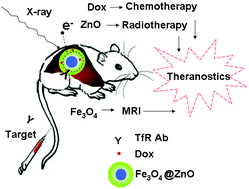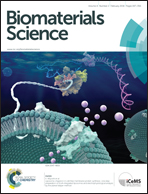Theranostics for hepatocellular carcinoma with Fe3O4@ZnO nanocomposites
Abstract
The purpose of the current study is to investigate Fe3O4@ZnO nanocomposites as theranostic agents for hepatocellular carcinoma (HCC). Initially, the transferrin receptor antibody (TfR Ab) functionalized Fe3O4@ZnO nanocomposites, followed by loading with doxorubicin (Dox) and denoted as Fe3O4@ZnO/Dox/TfR Ab, were prepared as an all-in-one system allowing for a targeted drug delivery with simultaneous concurrent chemoradiotherapy and magnetic resonance imaging (MRI) monitoring. The diagnostic and therapeutic functionalities for HCC were evaluated in vitro and in a murine orthotopic models using cell viability assays, cell cycle tests, histopathological examinations, and serum biochemistry tests. The results demonstrated that Fe3O4@ZnO/Dox/TfR Ab could deliver Dox into the targeted HCC SMMC-7721 cells to enhance its chemotherapeutic efficiency. Besides, with the addition of short term and low dose X-ray illumination, the Fe3O4@ZnO nanocomposites showed excellent radiosensitizer properties, further attacking the cancer cells. Tumor cells were also mostly arrested at G2/M, resulting in a distinct inhibition of cell proliferation. In vivo, after the treatment, a noninvasive visualization monitoring through MRI showed that tumor growth was significantly suppressed by the targeted chemoradiotherapy mediated by Fe3O4@ZnO/Dox/TfR Ab. Therefore, Fe3O4@ZnO nanocomposites could mediate the theranostic strategy for hepatocellular carcinoma.


 Please wait while we load your content...
Please wait while we load your content...